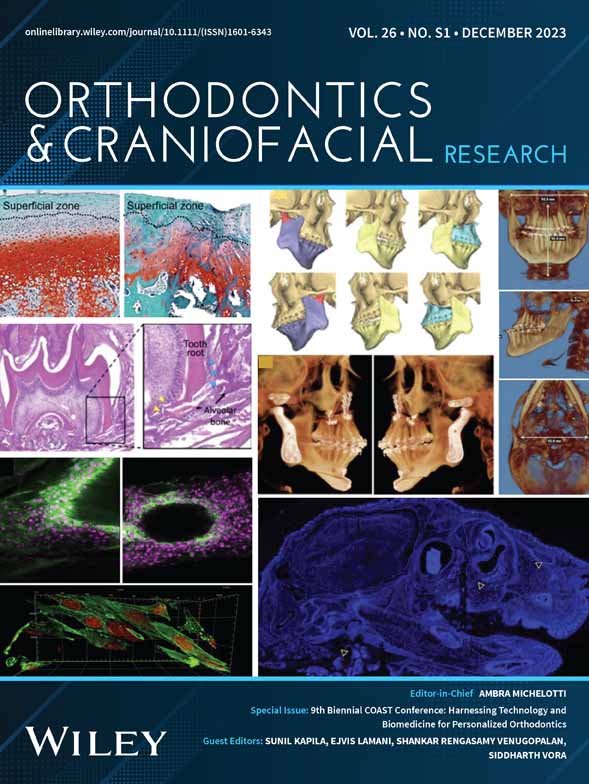Transcriptome analyses of murine right and left maxilla–mandibular complex
Abstract
Objective
The objective of the study was to investigate differential gene expression between murine right and left maxilla–mandibular (MxMn) complexes.
Setting and Sample Population
Wild-type (WT) C57BL/6 embryonic (E) day 14.5 (n = 3) and 18.5 (n = 3) murine embryos.
Methods
The E14.5 and 18.5 embryos were harvested and hemi-sectioned the MxMn complexes into right and left halves in the mid-sagittal plane. We isolated total RNA using Trizol reagent and further purified using the RNA-easy kit (QIAGEN). We confirmed equal expression of house-keeping genes in right and left halves using RT-PCR and then performed paired-end whole mRNA sequencing in LC Sciences (Houston, TX) followed by differential transcript analyses (>1 or <−1 log fold change; p < .05; q < .05; and FPKM >0.5 in 2/3 samples). The Mouse Genome Informatics and Online Mendelian Inheritance in Man databases as well as gnomAD constraint scores were used to prioritize differentially expressed transcripts.
Results
There were 19 upregulated and 19 downregulated transcripts at E14.5 and 8 upregulated and 17 downregulated transcripts at E18.5 time-points. These differentially expressed transcripts were statistically significant and shown to be associated with craniofacial phenotypes in mouse models. These transcripts also have significant gnomAD constraint scores and are enriched in biological processes critical for embryogenesis.
Conclusions
We identified significant differential expression of transcripts between E14.5 and 18.5 murine right and left MxMn complexes. These findings when extrapolated to humans, they may provide a biological basis for facial asymmetry. Further experiments are required to validate these findings in murine models with craniofacial asymmetry.
CONFLICT OF INTEREST STATEMENT
The authors have no conflict of interest to disclose.
Open Research
DATA AVAILABILITY STATEMENT
The data are available upon reasonable request.




